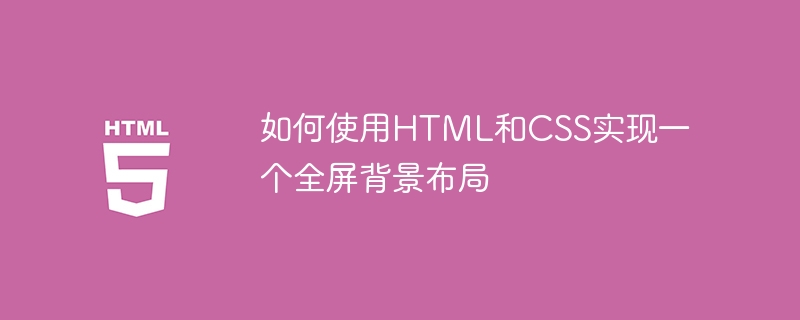

Use HTML and CSS to achieve full-screen background layout
In web design, full-screen background layout is a common and cool effect that can better display the website content, giving users a good visual experience. This article will introduce how to use HTML and CSS to implement a full-screen background layout, and provide specific code examples.
First, create a basic layout structure in the HTML file. The following is the HTML code for a simple full-screen background layout:
<!DOCTYPE html>
<html lang="en">
<head>
<meta charset="UTF-8">
<meta name="viewport" content="width=device-width, initial-scale=1.0">
<title>全屏背景布局</title>
<link rel="stylesheet" href="styles.css"> <!-- 引入CSS文件 -->
</head>
<body>
<div class="container">
<h1>全屏背景布局</h1>
<p>这是一个示例页面。</p>
</div>
</body>
</html>In the above HTML code, we use a div element as a container for the entire content. In actual applications, you can add more content as needed.
Next, let’s write CSS code to implement full-screen background layout. The following is a simple CSS code example:
body, html {
height: 100%;
margin: 0;
padding: 0;
}
.container {
background-image: url('background.jpg');
background-size: cover;
background-position: center;
height: 100%;
display: flex;
flex-direction: column;
justify-content: center;
align-items: center;
color: #fff;
text-align: center;
}In the above CSS code, we first set the height of the body and html to 100%, and removed the default margins and padding to ensure that the entire The page fills the screen.
Next, we set the background image of .container to background.jpg, and use the background-size: cover attribute to make the background image cover the entire container. background-position: centerThe attribute is to center the background image.
We also used Flexbox layout to vertically center the text content in the container. display: flex Set the container to flex layout, flex-direction: column make the content vertically arranged, justify-content: center and align-items : center Center the content vertically and horizontally respectively.
Finally, we also set the text color to white and center-align the text.
Using the above HTML and CSS code, we can implement a simple full-screen background layout. You can modify the background image and content in the container according to actual needs.
Summary: Full-screen background layout is a common web design effect. By using HTML and CSS, we can easily achieve this effect. The above code example provides a basic implementation of full-screen background layout, which you can modify and extend according to your needs. Hope this article is helpful to you!
The above is the detailed content of How to implement a full-screen background layout using HTML and CSS. For more information, please follow other related articles on the PHP Chinese website!




